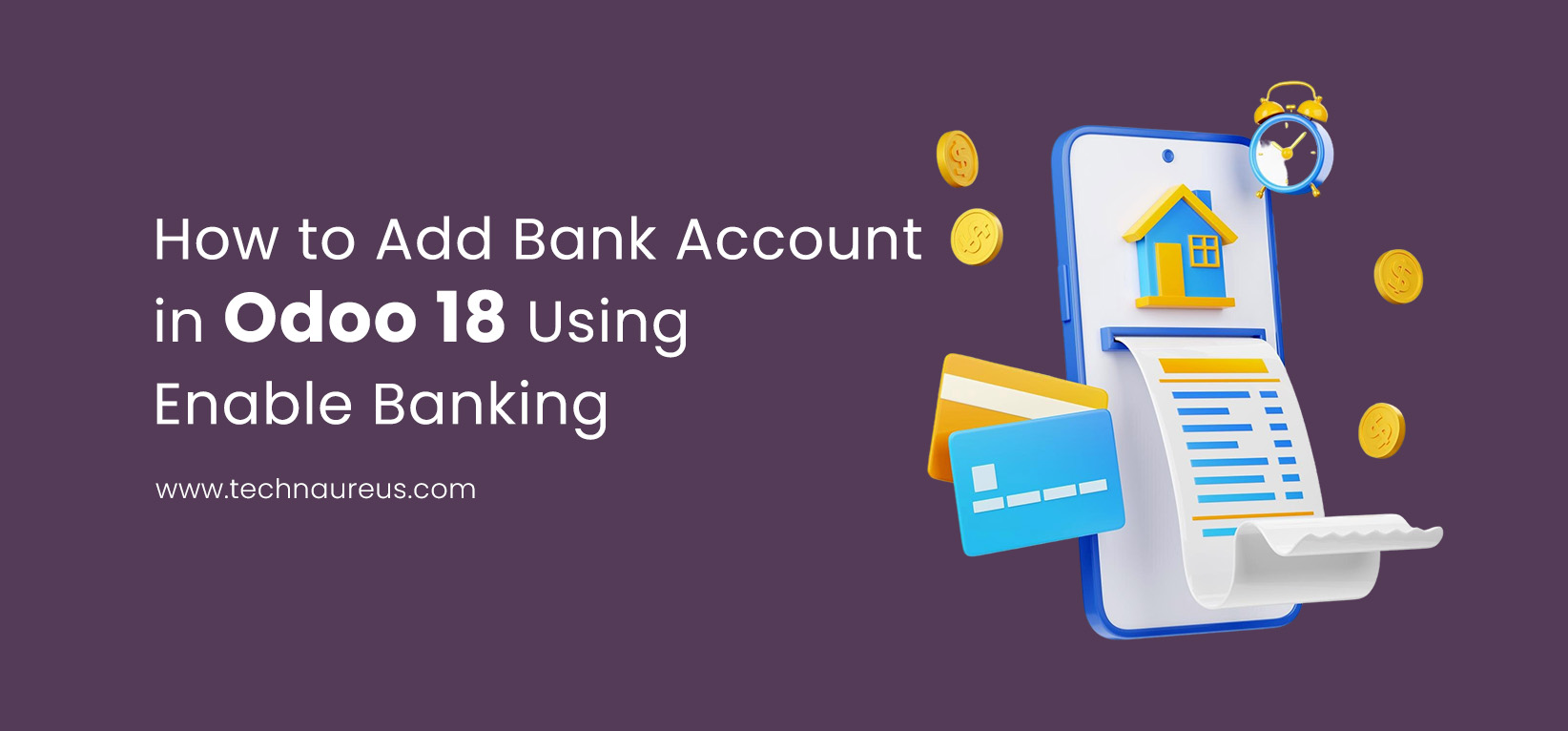Sanal Kumar NAug. 5, 2025
Managing bank accounts and transactions just got easier in Odoo 18, thanks to the integration of Enable Banking, a secure third-party provider that connects directly to banks using official APIs across Europe.
Enable Banking is a European API aggregator that provides a secure and reliable way to connect to banks using ASPSPs’ (Account Servicing Payment Service Providers) official APIs. It does not store or cache sensitive data and ensures non-intrusive, direct connectivity between your bank and Odoo.
First, make sure you’ve installed the Accounting app in Odoo. Once it’s installed:
Now we’ll head to where the bank accounts are managed:
Here you’ll enter the bank account details. Fill in the following fields:
Once you’ve entered the info, click Connect.
You’ll see an option to “Connect” if Odoo supports online sync for your bank.
Odoo will automatically start fetching transactions once connected.
That’s it! Your bank account is now fully connected to Odoo 18. Transactions will be fetched automatically, reducing manual data entry and improving accuracy in your accounting.
Odoo can automatically connect to various banks and financial platforms to import bank transactions. This eliminates the need for manual entry and ensures your bank statements are always current. The automation saves time and minimizes the risk of human errors in financial data.
Matching bank transactions with accounting entries becomes effortless with Odoo. The system intelligently suggests matches, simplifying the reconciliation process and enhancing the accuracy of financial reports. This feature significantly reduces the workload for accounting teams.
Businesses managing finances across several banks can integrate all their accounts into Odoo. This consolidated view helps users oversee transactions from different sources in one place, simplifying financial tracking and management.
Odoo uses secure channels, such as third-party banking APIs or direct bank connections, to retrieve data. The platform adheres to industry-standard encryption and compliance practices to ensure financial information remains protected from unauthorized access.
With up-to-date transaction data, businesses gain a clear understanding of their cash flow. Odoo helps track incoming and outgoing payments, supporting better financial planning and informed decision-making for managing budgets and resources.

0